Birds add life, color, and natural pest control to any garden space. The vibrant flash of a cardinal or the cheerful melody of a chickadee can transform an ordinary backyard into a thriving wildlife sanctuary. While many gardeners know that bird feeders and water features attract feathered visitors, fewer understand the significant role color plays in drawing birds to a garden. Different bird species have unique color preferences based on their visual systems, feeding habits, and evolutionary adaptations. By strategically incorporating certain colors into your garden design, you can create an irresistible haven for a diverse array of bird species. This article explores the fascinating relationship between colors and bird attraction, providing practical insights for bird-loving gardeners.
The Science Behind Bird Vision and Color Perception
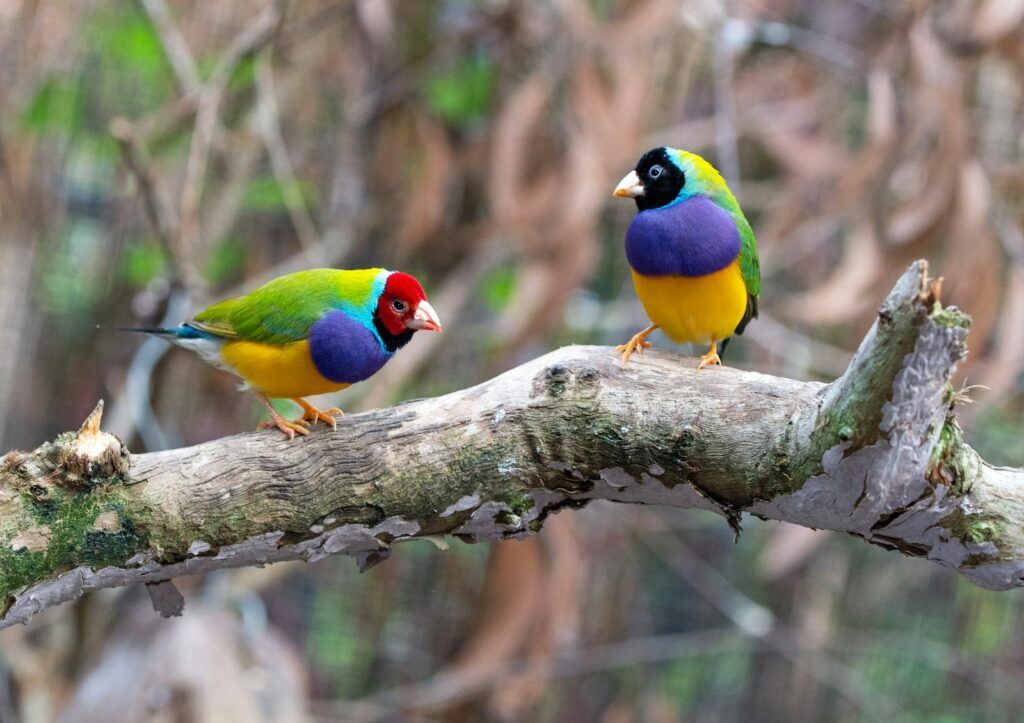
Birds perceive colors differently than humans do, with many species able to see ultraviolet light that’s invisible to the human eye. This enhanced color vision evolved to help birds identify food sources, recognize potential mates, and navigate their environments with precision. Unlike humans, who have three types of color receptors (trichromatic vision), many birds possess four types (tetrachromatic vision), allowing them to distinguish subtle color variations we cannot detect. This advanced visual system means birds can identify specific flower colors that signal nectar availability or fruit ripeness. Research has shown that birds’ color preferences aren’t merely aesthetic but serve crucial survival functions, helping them locate the most nutritious food sources and safest habitats. Understanding this biological foundation helps explain why certain colors consistently outperform others in attracting avian visitors.
Red: The Universal Bird Attractor

Red stands as perhaps the most powerful color for attracting a wide variety of birds to your garden. This bold hue particularly appeals to hummingbirds, which have evolved alongside red tubular flowers in many ecosystems. Cardinals, tanagers, and orioles also demonstrate strong preferences for red fruit and flowers, making red an excellent choice for diversifying your garden’s bird population. The effectiveness of red likely stems from its high visibility against green foliage and its association with ripe fruits rich in nutrients. Garden elements that effectively incorporate red include salvia, bee balm (monarda), cardinal flower, and red columbine plants. For hummingbird feeders specifically, red components have proven so effective that many commercial feeders incorporate this color even when filled with clear sugar solution.
Orange: Attracting Orioles and Tanagers
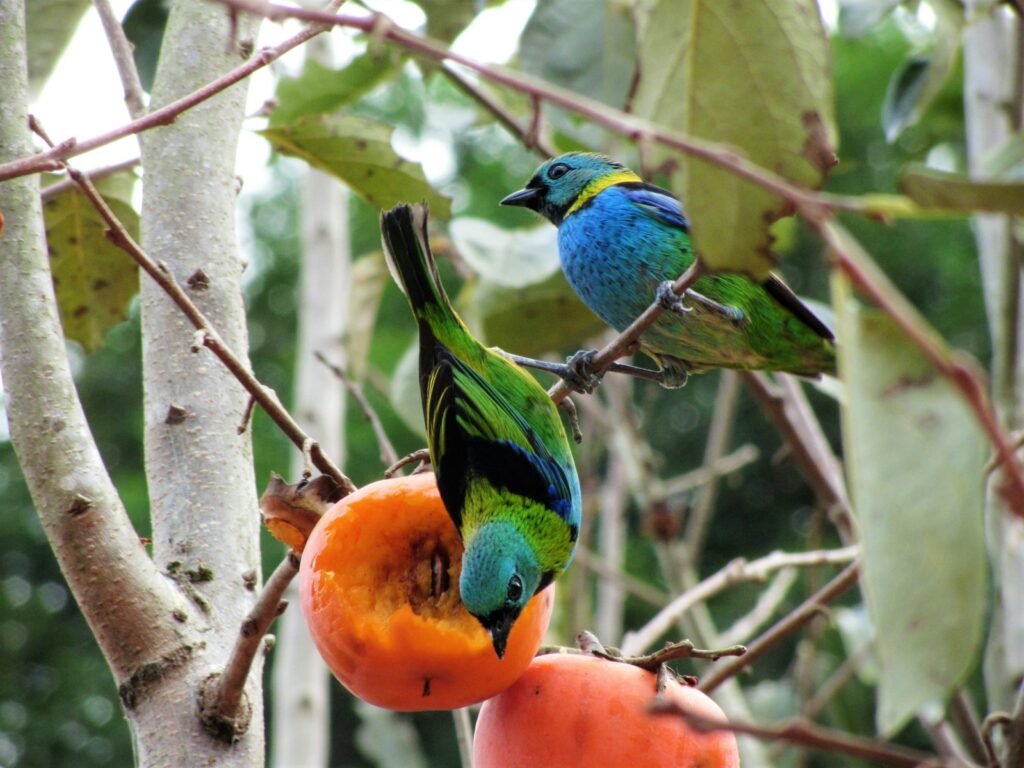
Orange ranks as another highly attractive color for specific bird species, particularly orioles and various tanager species that naturally seek orange fruits in the wild. This warm, vibrant color often signals ripeness in fruits like oranges, mangoes, and papayas, making it an evolutionary trigger for fruit-eating birds. Baltimore Orioles show a remarkable preference for orange, responding strongly to orange feeders and oranges cut in half and displayed in the garden. For maximum effectiveness, incorporate orange through both artificial elements like feeders and natural components like orange trumpet vines, native honeysuckle with orange blooms, or orange butterfly weed. The contrast between orange and the predominantly green garden background creates visual signals that traveling birds can spot from considerable distances, making your garden a noticeable stopover point during migration seasons.
Yellow: Bright Attraction for Finches and Warblers
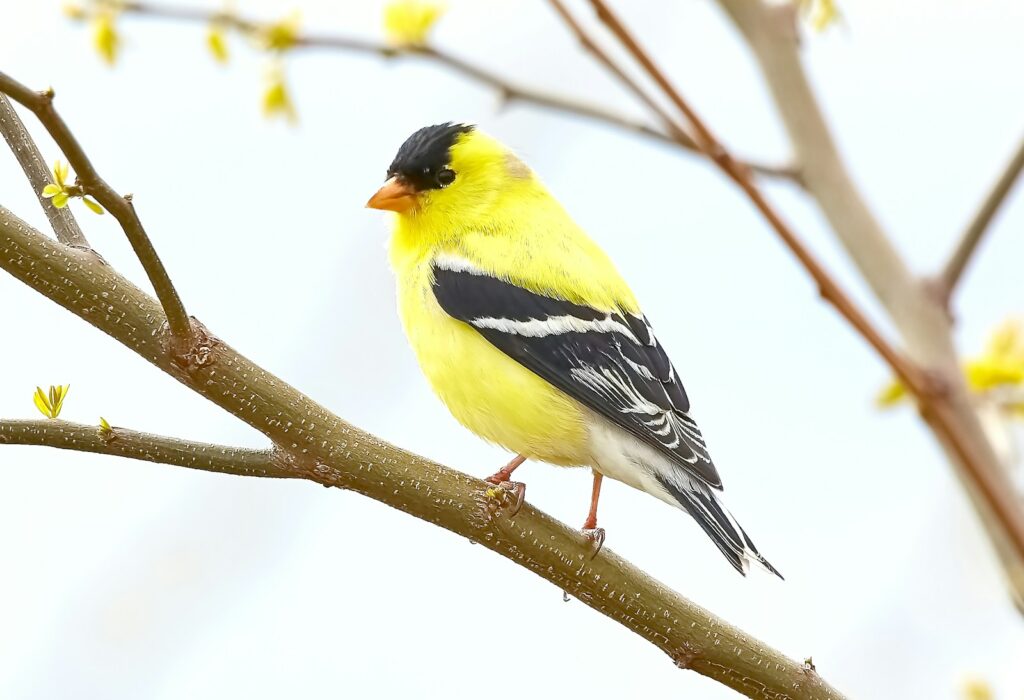
Yellow holds particular appeal for finches, goldfinches, warblers, and other small songbirds that naturally seek yellow flowers and seeds in their habitats. This sunny color mimics the appearance of certain flower types that produce abundant nectar or seeds, serving as a natural visual cue for these species. American goldfinches demonstrate an especially strong attraction to yellow garden elements, often visiting gardens featuring sunflowers, coreopsis, and yellow coneflowers. Research suggests that the bright, reflective quality of yellow makes it highly visible even in low light conditions during early morning or evening feeding times. To maximize yellow’s appeal in your garden, consider planting black-eyed Susans, goldenrod, yellow evening primrose, and maintaining thistle feeders with yellow components for goldfinches.
Blue: Attracting Bluebirds and Jays
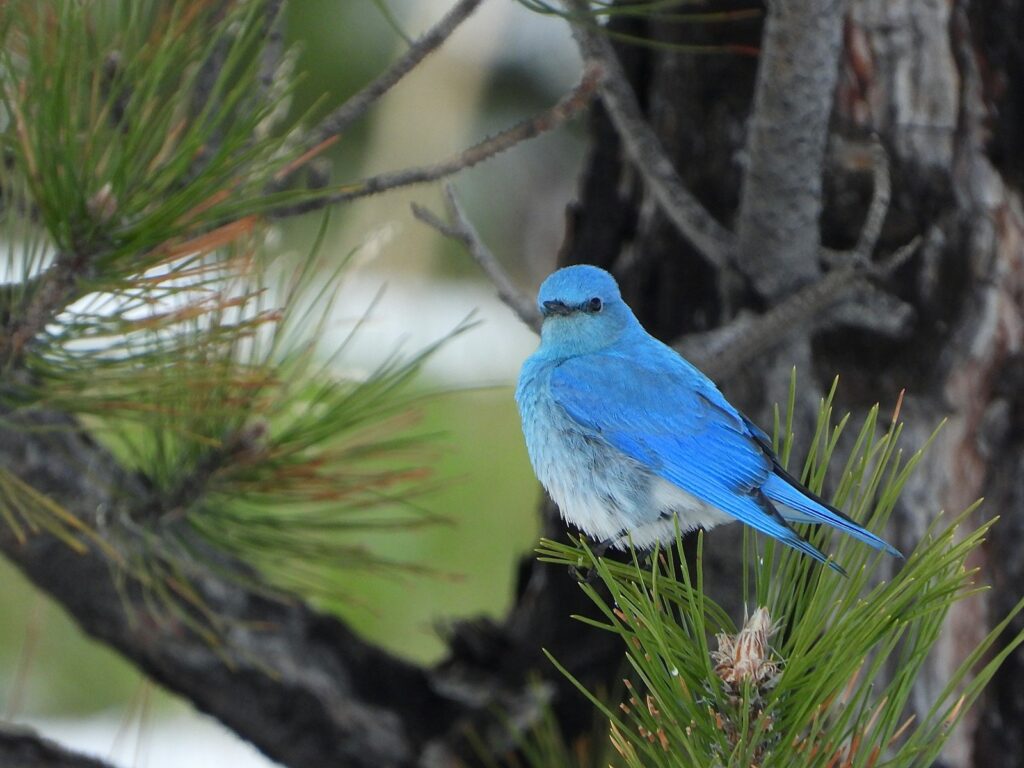
Blue elements in the garden create special appeal for bluebirds, blue jays, and indigo buntings, though for different reasons than the warm colors previously discussed. Rather than signaling food directly, blue often attracts birds through territorial or social recognition, as many blue-colored birds respond to similar colors in their environment. Bluebirds show particular interest in blue birdhouses, while blue jays may be attracted to blue decorative elements that catch their curious attention. In natural plantings, blue flowers like salvia, delphinium, and bluebells add this color component effectively. The rarity of true blue makes these elements stand out dramatically against typical garden backgrounds, creating focal points that birds notice during flight. Interestingly, research indicates that while blue doesn’t necessarily signal food sources as directly as red or orange, it creates comfort zones for certain species that associate the color with safety or familiarity.
Pink and Purple: Overlooked Hummingbird Magnets
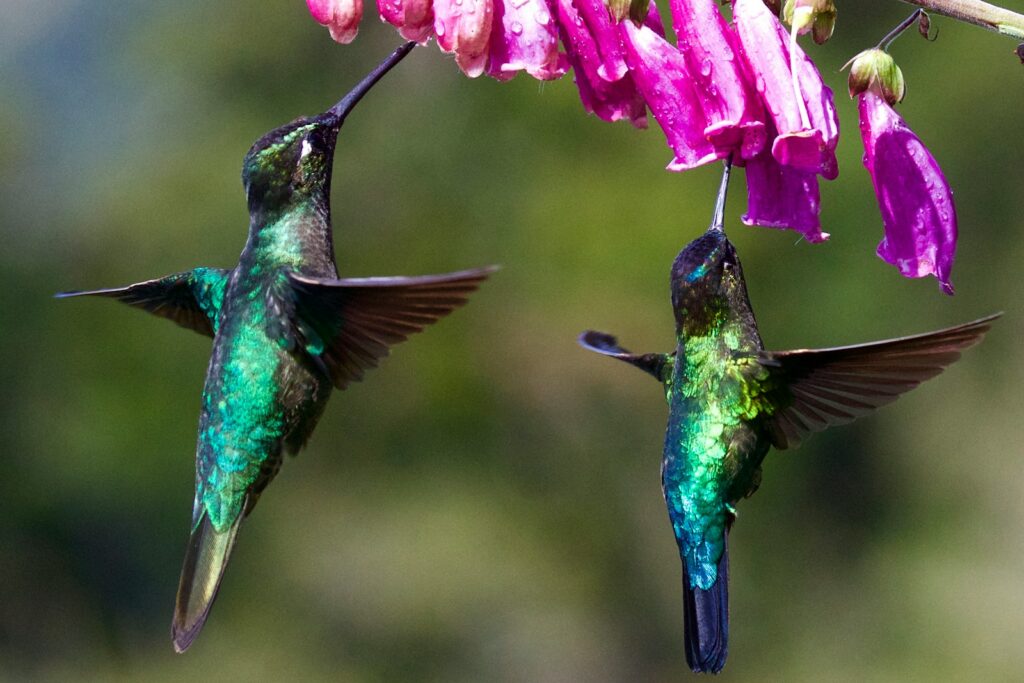
While red receives most attention for hummingbird attraction, pink and purple flowers prove remarkably effective at drawing these aerial acrobats to gardens. Hummingbirds show strong preferences for tubular flowers in the pink-to-purple color spectrum, including salvias, penstemons, and foxgloves that match their specialized feeding apparatus. The attraction likely relates to the birds’ ability to perceive ultraviolet patterns in these flowers that remain invisible to humans but signal high nectar content. Garden trials have demonstrated that gardens featuring diverse pink and purple blooming plants often attract greater hummingbird diversity than those limited to red flowers alone. For maximum effectiveness, incorporate varying shades from light pink to deep purple through bee balm, purple coneflower, lavender, and native columbine varieties that provide nectar throughout the growing season.
White: Night Feeding and Natural Contrast
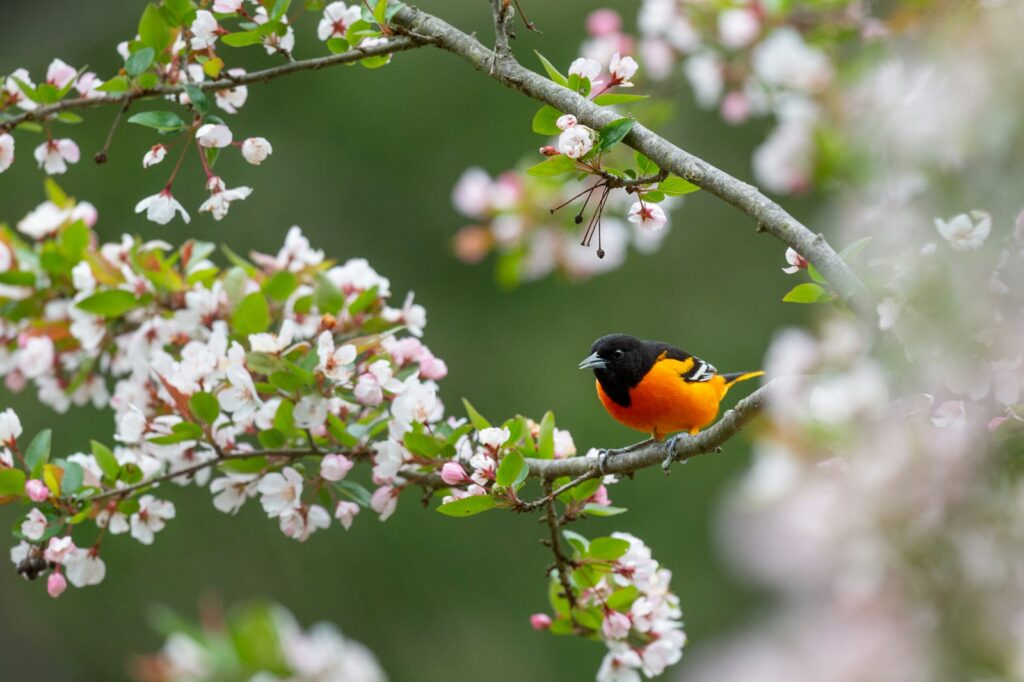
White flowers and garden elements serve a unique purpose in bird attraction, particularly for species that feed during dawn, dusk, or moonlit conditions when visibility decreases. The high contrast of white against darker backgrounds makes these elements visible when colored options fade into shadow, extending your garden’s bird-feeding potential into extended hours. Moths and night insects are often attracted to white flowers, indirectly creating feeding opportunities for insectivorous birds during early morning hours. White-flowering plants like sweet alyssum, moonflower, and garden phlox not only attract birds but also create striking visual anchor points throughout the garden design. For maximum effectiveness, position white elements where they’ll catch moonlight or early morning light, making them beacons for bird activity during transition periods between night and day.
Green: Camouflage and Comfort for Shy Species
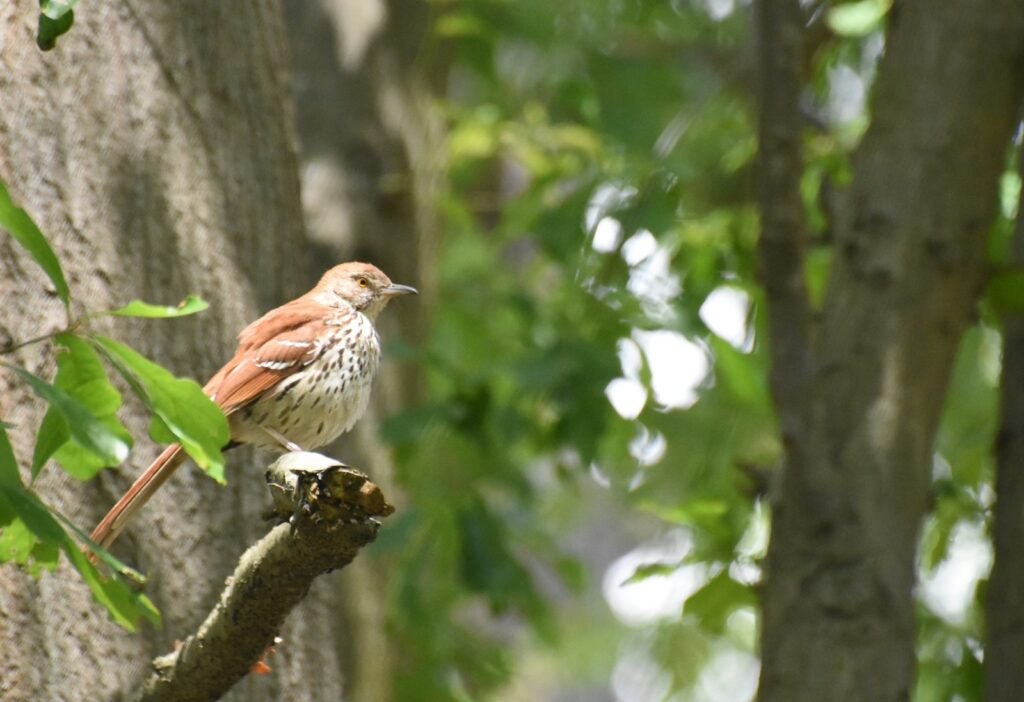
While not typically considered an attractant color, strategic use of varying green tones plays a crucial role in creating environments where shy bird species feel secure enough to visit. Birds like thrushes, certain warblers, and towhees prefer feeding in areas with protective green cover nearby, allowing quick retreat if threatened. Different shades of green foliage create depth and dimension in the garden that mimics natural forest edges, where many bird species evolved to feed safely. The contrast between green background elements and brightly colored flowers or feeders enhances the visibility of these attractants while still providing security. For maximum effectiveness, create layered plantings with varying heights and textures of green foliage, from ground covers to shrubs and trees, establishing natural feeding corridors that birds can navigate while remaining close to protective cover.
Contrast Matters More Than Single Colors
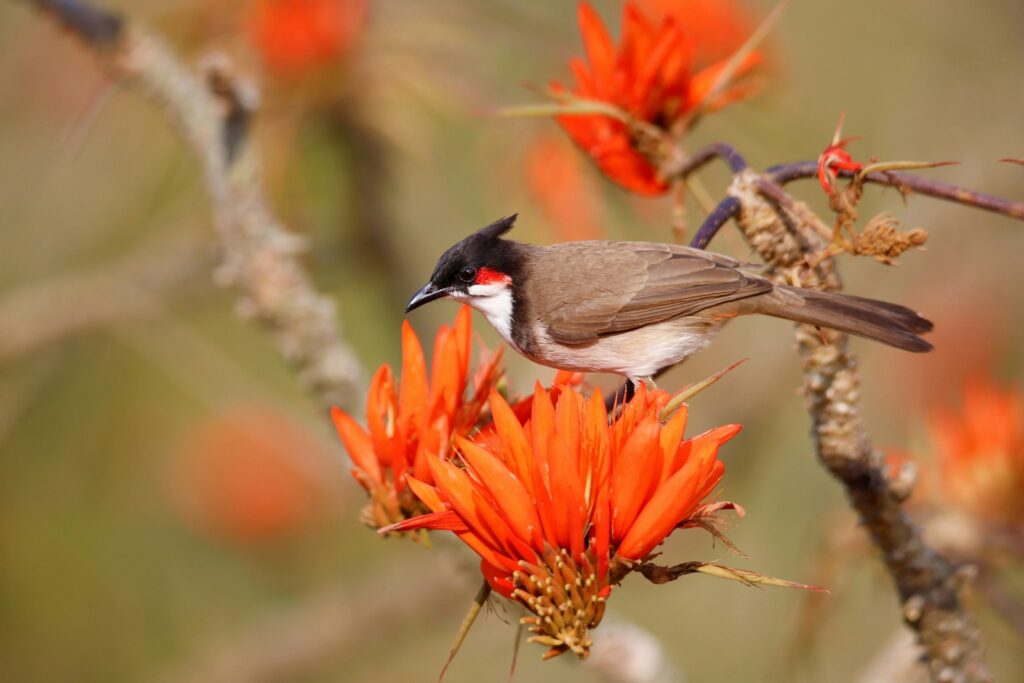
Bird research consistently shows that color contrast often proves more important than any single color in attracting birds to garden features. High-contrast combinations like red flowers against green foliage or white blooms against dark mulch create visual signals that birds can detect from greater distances during flight. This principle explains why many successful bird gardens incorporate strong color opposites rather than monochromatic schemes, regardless of which specific colors are used. The natural visual system of birds evolved to detect edges and boundaries through contrast differences, helping them identify potential food sources from the air. When designing bird-friendly gardens, consider creating “color pop” moments throughout the landscape where bright colors stand out dramatically against complementary backgrounds. These strategic contrast zones serve as landing beacons that draw birds into the garden space before they discover additional resources.
Seasonal Color Changes and Bird Attraction
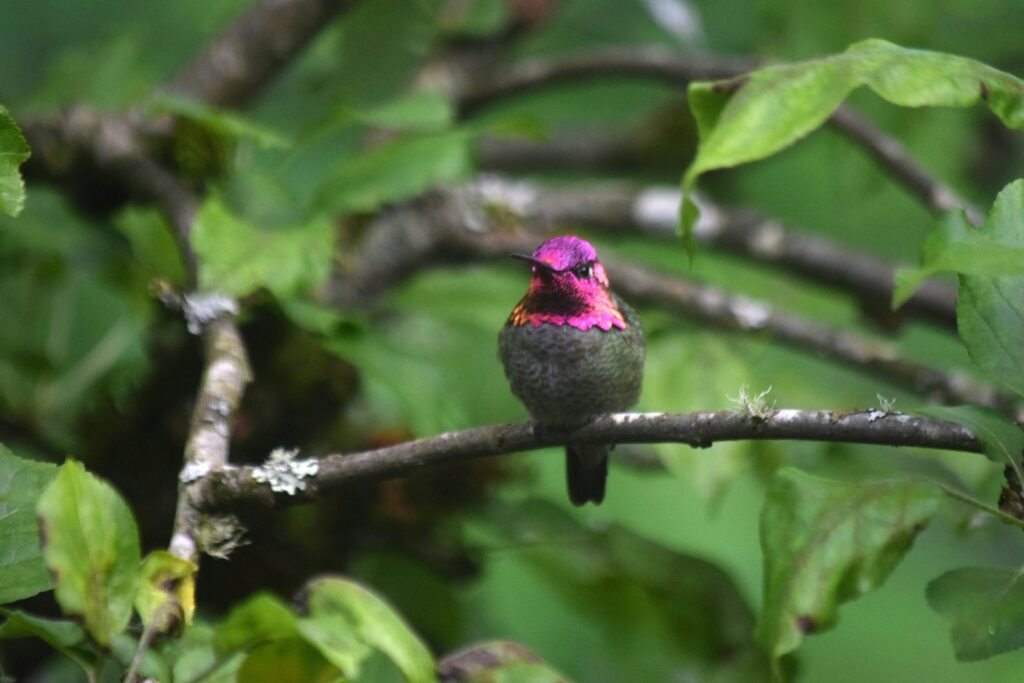
Bird attraction through color works most effectively when garden colors shift seasonally to match birds’ changing nutritional needs and migration patterns. Spring gardens benefit from reds and pinks that attract early hummingbird arrivals, while summer calls for deeper blues and purples that signal peak nectar production during the hottest months. Fall landscapes should incorporate orange and yellow elements that mimic ripening fruits and seeds, attracting migrating species seeking high-energy food sources before long journeys. Winter gardens maintain bird interest through red berries and colorful feeder stations when natural color becomes scarce in the landscape. This seasonal color progression mimics natural ecosystems where different plant species bloom and fruit in succession, providing consistent resources for resident and migratory birds throughout the year. By planning your garden with this natural rhythm in mind, you can maintain continuous bird activity across seasons.
Native Plant Colors vs. Exotic Ornamentals
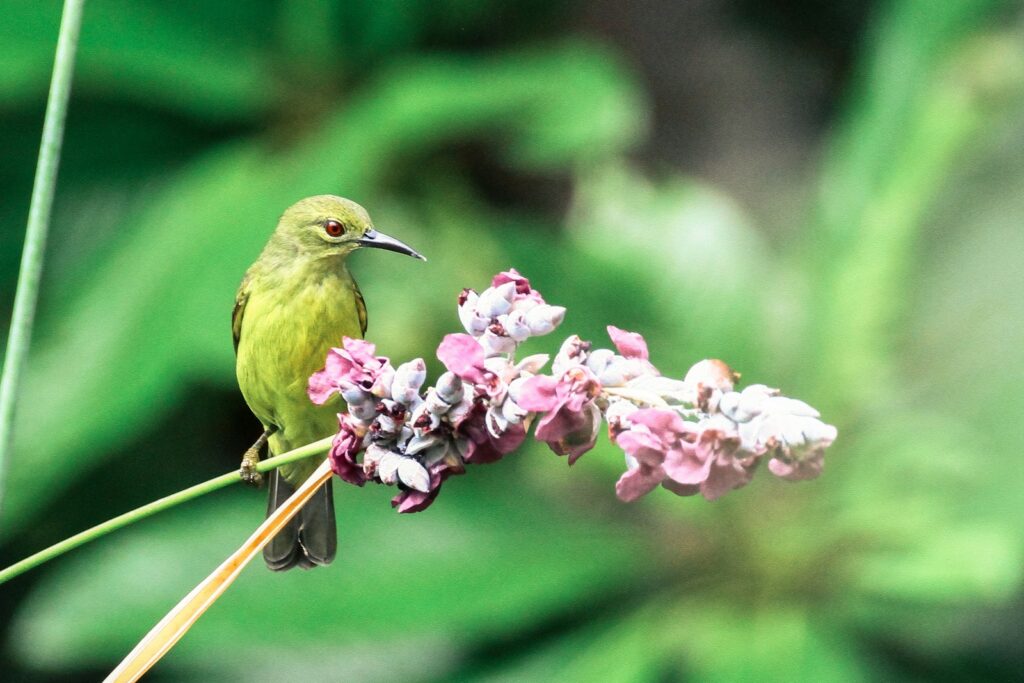
When selecting colored plants for bird attraction, native species typically outperform exotic ornamentals despite sometimes having less dramatic coloration. Native plant colors evolved alongside local bird populations, creating natural associations between specific colors and nutritional rewards that exotic plants may lack. Research has demonstrated that native plants produce up to 35 times more caterpillar biomass than exotic alternatives, indirectly supporting more bird activity regardless of flower color. Birds often develop regional color preferences based on the dominant native flowering plants in their range, making locally-appropriate color choices more effective than universal recommendations. For maximum effectiveness, research the native flower colors historically present in your region and prioritize these shades in your bird attraction strategy, even if they seem less vibrant than exotic alternatives.
Strategic Color Placement in the Garden

The location of colored elements within your garden significantly impacts their effectiveness at attracting birds. Elevated color positions generally outperform ground-level placements, as birds typically spot potential feeding sites while in flight or perched above garden level. Edge zones where different habitats meet (like woodland borders or property boundaries) benefit particularly from bright color placement, as these transition areas naturally attract birds moving between habitat types. Strategic color “trails” through the garden can guide birds from entry points toward feeding stations, water features, or preferred nesting sites using progressively spaced color elements. When positioning colored bird attractions, consider sightlines from above rather than horizontal human viewing perspectives, ensuring colors remain visible to birds approaching from varied angles and heights. This aerial perspective approach often means placing color beacons higher than might seem natural in traditional landscape design.
Combining Color With Other Attraction Factors
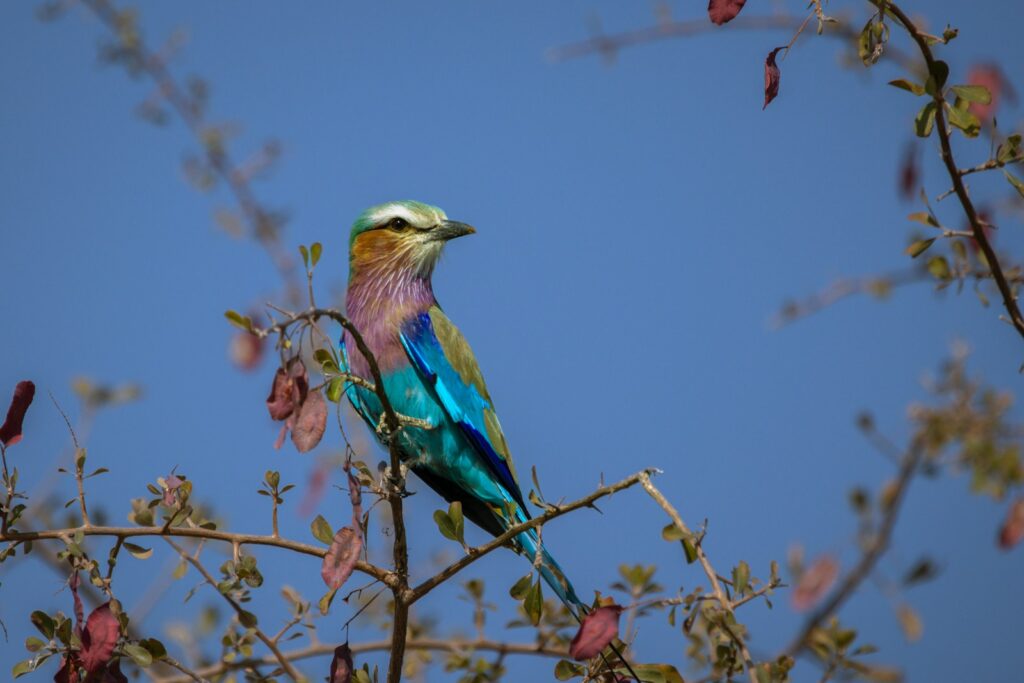
While color plays a crucial role in initial bird attraction, lasting garden bird diversity depends on combining appropriate colors with complementary attraction factors. Water features placed near colored flowering plants significantly increase bird visitation compared to either element alone, as birds require both nutrition and hydration. Natural food sources like seed heads and berries should accompany any colored feeders or nectar sources, providing diverse nutrition options that attract varied species. Protective cover positioned near colorful feeding areas addresses birds’ safety needs, allowing them to quickly retreat when predators threaten. The most successful bird gardens integrate all these elements—color, water, food diversity, and protection—in thoughtfully designed micro-habitats throughout the landscape. This comprehensive approach ensures that the initial color attraction converts to sustained bird presence as visitors discover the garden meets their complete habitat requirements.
Conclusion: Creating Your Color Strategy
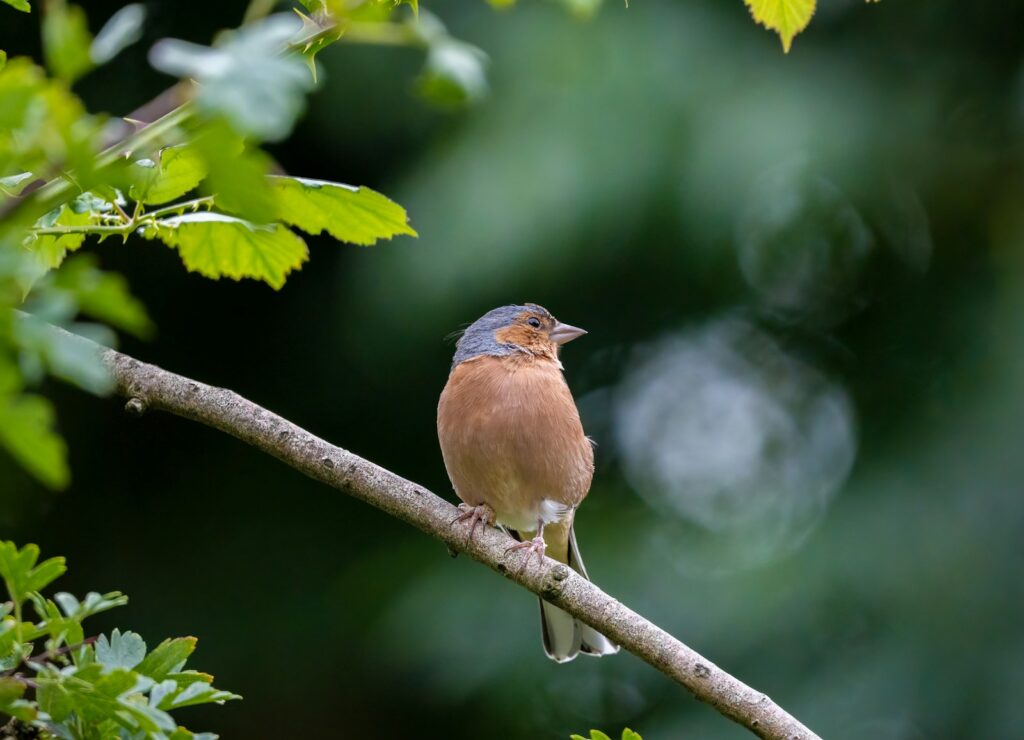
The most effective bird-attracting garden incorporates a strategic blend of colors targeted to desired species while maintaining natural balance and seasonal progression. Begin by identifying which bird species visit your region, researching their specific color preferences, and incorporating those colors through both plantings and supplemental features like feeders and birdhouses. Remember that contrast often matters more than specific color choices, and native plant options typically outperform exotic alternatives regardless of color intensity. Design your garden with both seasonal change and spatial arrangement in mind, ensuring color availability throughout the year and across different garden zones. By thoughtfully implementing these color principles alongside other habitat elements, you’ll create a vibrant garden sanctuary that attracts diverse bird species while providing essential ecological support to your local bird population throughout the changing seasons.
